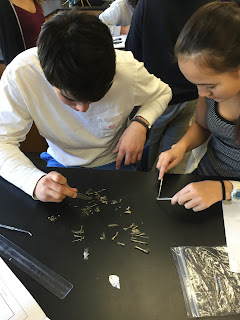As people who have been keeping up with my 20 Time blog know, I have been working towards seeing if trying new things makes people happier. So after collecting data and talking to different people about trying new things and being happy, I had enough data to talk about the benefits of trying new things. I found that trying new things does lead to increased happiness levels, unless the 'new thing' tried relies on the reaction of another person and that reaction is a negative one.
I am generally not a fan of speaking in class, let alone presenting in front of my class. What I kept telling myself, however, is that the TED talk is different in the sense that I am the one who researched and collected data for this topic. No one will criticize my knowledge of the topic or try and weaken my points as I obviously know it the best, after all the work I put into it. Everyone in the class was there to hear what I had to say, not analyze it and pick it apart.
Because of my nerves, I forgot to talk a bit more about my research but watching my TED talk I think I covered my points pretty well regardless, but if I could go back I would have mentioned it. I agree with the way I was graded, obviously I lost points for my timing but apart these things, I covered everything I had practiced at home which makes me happy. It definitely made me feel more confident overall. For people who have to do a TED talk, I really would advise practicing in front of other people. It feels weird at first, but once you're up in front of a group of people and doing the real thing you won't feel as uncomfortable.
I really enjoyed watching the other presentations. I heard some people comment about how boring it was to have to hear everyone speak but I had a very different reaction. Seeing the culmination of weeks of work and people's interests was fascinating to me. I learnt a lot not only about the different topics but also about the people in our class.
I'm really pleased that we did this project. It forced me to manage myself and my time in a way that no other teacher has before, and I think it was an excellent experience. I've grown as a person because of this project. As I keep mentioning on my blog, I've learnt to be more patient and understanding with people. And I've gained confidence in myself too. I wouldn't trade doing this project for anything.















































